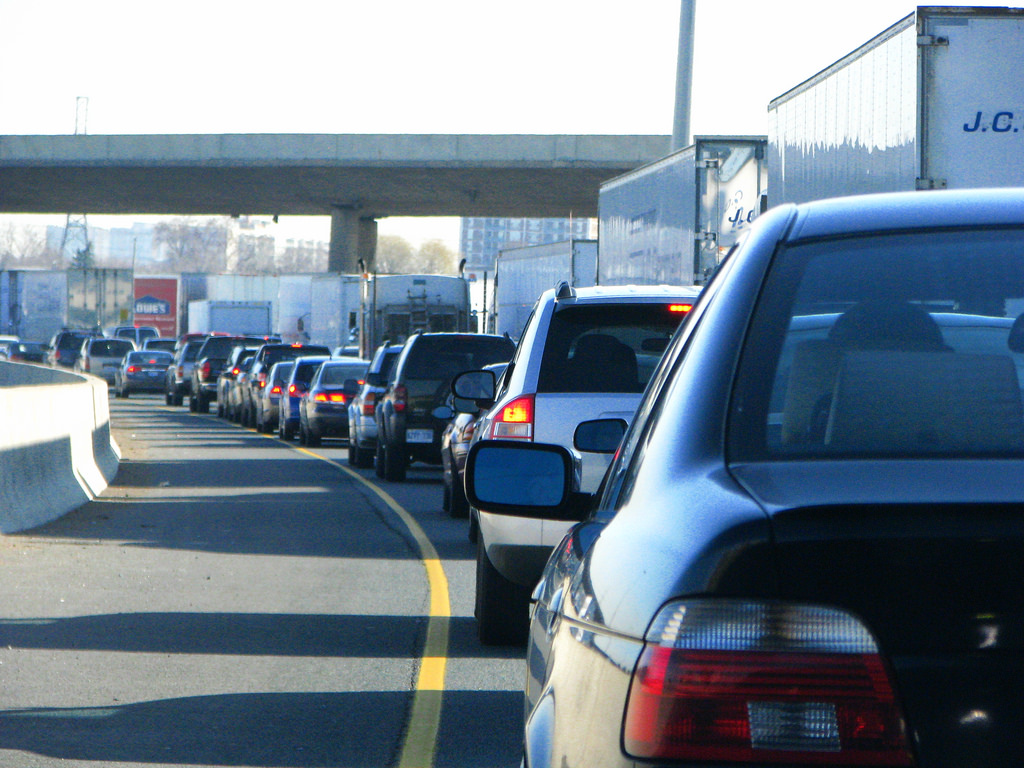When it comes to transport, liquefied natural gas (LNG) will be a destination fuel rather than a bridge to renewables-generated electricity, said oil representatives speaking at the Economist’s annual Energy Summit in London.
The claim mirrors the recent COP22 climate pledge by oil giants to invest in gas as a ‘climate friendly’ fuel.
“We’ve talked a lot about gas being the bridge, but in heavy transport, in shipping, in trucking, LNG could be the destination fuel, not the bridge fuel,” said Steve Hill Executive Vice President for Gas and Energy Markets at Shell.
“I think fossil fuels will be a thing of the past but we’re going to continue to need oils and natural gas by 2030. There are things that cannot easily be switched to electricity of which aviation is one of the more obvious,” added Chris Goodall author of The Switch: How Solar, Storage and New Tech Means Cheap Power for All.
The comments echo presentations delivered by ExxonMobil to the UK Department for Transport this year where the oil giant lobbied against electrifying Britain’s transport system.
However, in order to meet the UK‘s 2050 climate change targets, 60 percent of new cars and vans need to be electric by 2030 according to analysis by the Committee on Climate Change.
“One fourth of global energy demand is transportation; airplanes, trucks, ships. Some of that has become much more efficient but the demand for transport is growing very rapidly,” said Eirik Waerness, Chief Executive at Statoil.
Europe is set to have 500,000 electric vehicles on the road by the end of this calendar year, according to a recent report by Transport & Environment, yet electric vehicles still remain a niche market, with an overall lack of refueling stations.
But pick-up is growing rapidly. In the UK, the number of electric vehicles on the road is around 80,000, up from 2,000 just five years ago. And in London there are currently 1,500 hybrids, 22 electric and eight hydrogen buses operating out of a total bus fleet of 8,600. Mayor Sadiq Khan added a further 51 electric buses in September.
London, however, is a major European capital and one with great investment opportunities. Smaller areas may find it harder to electrify their transport infrastructure, so gas may be seen as a cleaner and more realistic alternative. And gas is a solution the British Government has been promoting as well.
As Environment Secretary Andrea Leadsom (former energy minister) said in May: “We will have to replace this energy capacity with lower carbon sources. Gas is the cleanest fossil fuel and shale gas can provide an effective ‘low-carbon bridge’ while we move to renewable energy.”
And two years ago the Oxford Institute for Energy Studies published a report that said the main focus in the UK in coming years would be on gas-powered heavy vehicles.
However, others on the November 10 panel maintained that gas, a polluting fossil fuel, should not be accepted as the final fuel source for transport.
Christian Rynning-Tonnesen CEO at Statkraft, a leading hydropower company owned by the Norwegian state said that 90 percent of all new cars in 2040 would be electric and challenged any audience member to find something “more likely to happen.”
Tonnesen also gave an example of Norway’s recent push to make vessel ships run on electrical batteries, adding that some would be hybrids of diesel and electricity. “Norway has 98 percent renewable electricity energy system, so we can be one of the first countries in the world that are certainly renewable. In the electricity production and the transportation sector, we are constructing ships now that will run on batteries and there is a plan to have a power charge for ships at every big port in Norway,” he said.
Sir David King, British Foreign Secretary’s special representative for Climate Change also expressed optimism for big transportation to move toward renewable sources, bypassing the need for natural gas.
“I’m not pessimistic about air travel shifting to renewable technologies, because they are getting into the market so quickly and they’re cost effective,” he said. “Just look at Varialift, an airship company that is looking to solar and helium to transport up to 500 tons of cargo. If you want to move crates of tomatoes, say from Spain to the UK, you can use the vast surface of the airship to intersect with the sunlight.”
Photo: Michael Gil via Flickr | CC 2.0
Subscribe to our newsletter
Stay up to date with DeSmog news and alerts







